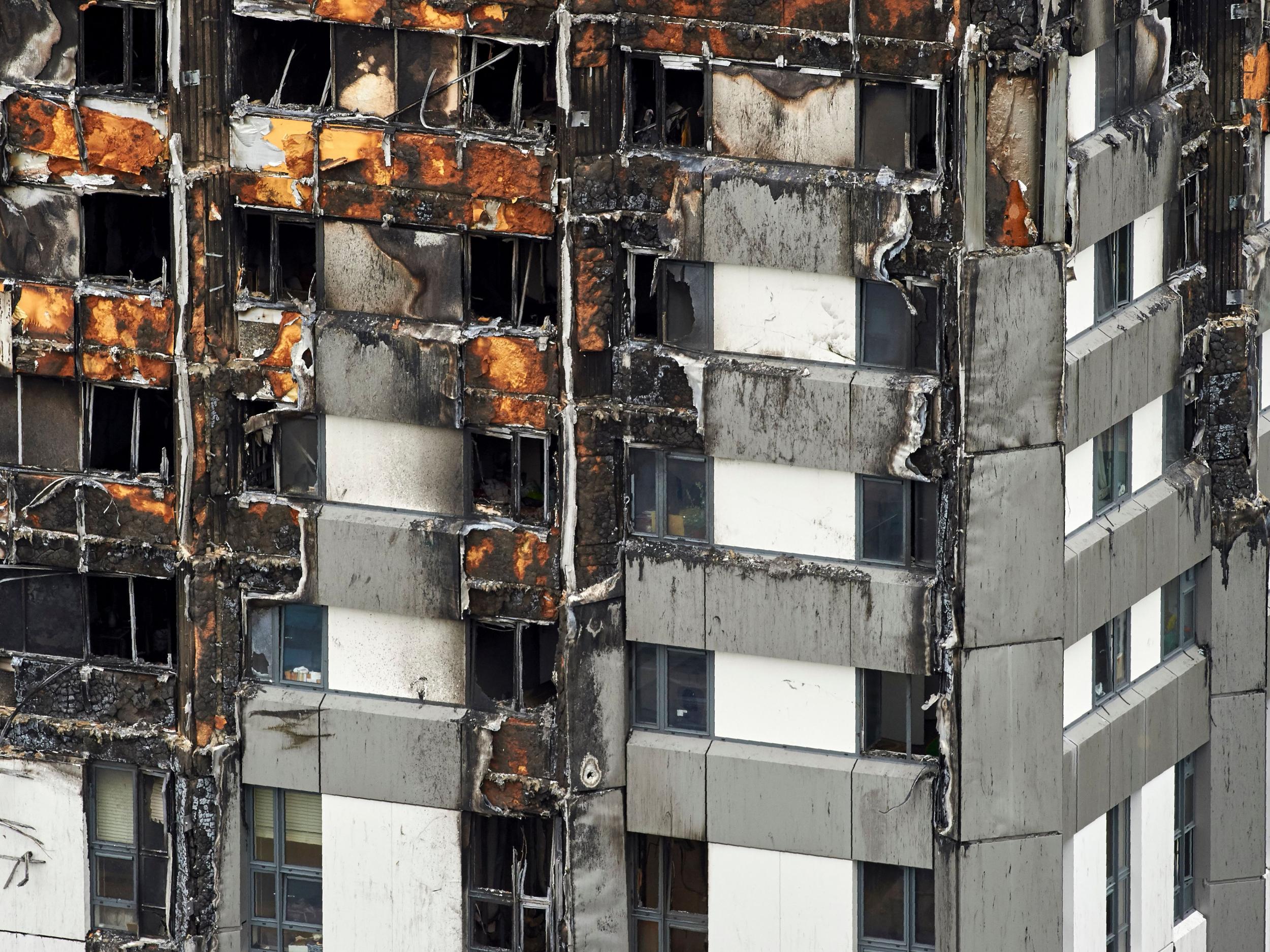Grenfell Tower: New cladding ban 'still allows flammable panels', firefighters warn
Fire Brigades Union says move is 'designed for political convenience'

Your support helps us to tell the story
From reproductive rights to climate change to Big Tech, The Independent is on the ground when the story is developing. Whether it's investigating the financials of Elon Musk's pro-Trump PAC or producing our latest documentary, 'The A Word', which shines a light on the American women fighting for reproductive rights, we know how important it is to parse out the facts from the messaging.
At such a critical moment in US history, we need reporters on the ground. Your donation allows us to keep sending journalists to speak to both sides of the story.
The Independent is trusted by Americans across the entire political spectrum. And unlike many other quality news outlets, we choose not to lock Americans out of our reporting and analysis with paywalls. We believe quality journalism should be available to everyone, paid for by those who can afford it.
Your support makes all the difference.A ban on the use of combustible cladding following the Grenfell Tower fire will still allow panelling that can catch fire, firefighters have warned.
Housing secretary James Brokenshire announced on Monday the government would ban the use of combustible materials, including cladding from all new schools, hospitals, care homes, student accommodation and residential houses rising over 18 metres.
But the Fire Brigades Union (FBU) said the new regulations did not go far enough, claiming the move was “designed for political convenience”.
Class A2 materials such as plasterboard, which has limited combustibility, will continue to be permitted under the new rules.
Firefighters are calling for only A1 materials, which do not contribute to a fire at any stage – such as metal, stone and glass – be allowed.
The partial ban on combustible cladding will not be applied retrospectively to buildings that have already had the panels fitted.
FBU general secretary Matt Wrack said: “These measures do not deal with the existing cladding on nearly 500 buildings across England where people live and work every day.
“The government’s proposals only apply to buildings over 18 metres high, plus hospitals, care homes and student accommodation, when they should apply to all buildings, whatever their height or use.
“They continue to allow A2 materials, when they should permit only the highest standard of A1.”
The ban follows 15 months of pressure from those affected by the tragedy which killed 72 people in Kensington.
Announcing the ban following a consultation, Mr Brokenshire said he wanted to bring about a “change in culture on building safety”, saying the “unimaginable horror” of the Grenfell Tower inferno must not be allowed to happen again.
The announcement at Tory party conference comes as the bereaved, survivors and residents prepare to give their testimony to the Grenfell Tower Inquiry this week.
Mr Wrack added: “This announcement is designed for political convenience, not for thoroughgoing change. The failings in the fire safety regime are far wider than just the materials used. The whole deregulated system and weak guidance needs to be overhauled.
“Many residents of high rise residential buildings and firefighters wanted more comprehensive action taken against flammable cladding. This government has failed to deliver.”
A spokesman for Mr Brokenshire said: “We are saddened to see the response of the Fire Brigades Union. We consulted on this very important matter and indeed went beyond what was asked of us.
“These measures will save lives, and we are clear building safety is at the very heart of what Mr Brokenshire is doing.”
Join our commenting forum
Join thought-provoking conversations, follow other Independent readers and see their replies
Comments